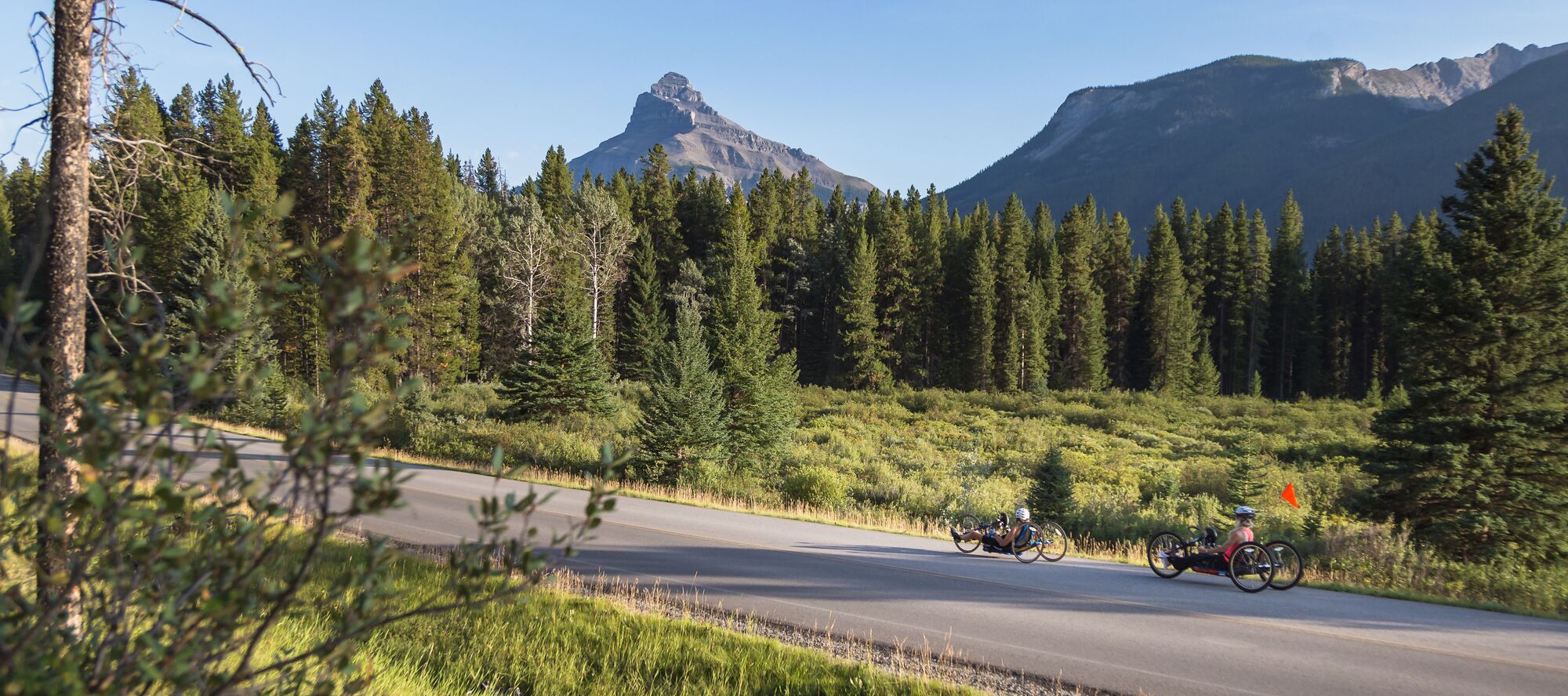Filming and Photography along the Bow Valley Parkway

If you intend to film along the Bow Valley Parkway, please visit the Parks Canada websites for more information about film permits. Please note that drones are not permitted within national park boundaries.
Johnston Canyon
As Johnston Creek approaches the Bow River, it flows through a large canyon formed by erosion over thousands of years. The creek has cut through the limestone rock to form sheer canyon walls, as well as waterfalls, tunnels, and pools.
A popular hiking trail follows the canyon and leads to a meadow above the canyon. The first part of the trail consists of a constructed walkway with safety rails and bridges, while the last part of the trail is natural and more rugged. The meadow features the Ink Pots, which are six blue-green spring-fed pools. Ice climbing is a popular activity on the frozen waterfalls in winter.
The route and various platforms along the trail provide an interesting and easily accessible route for film crews to shoot hikers or ice climbers in action.
Johnston Canyon is a suitable location for filming in summer and winter. It is not suitable for live broadcast.
Castle Mountain
With an impressively towering appearance and interesting history, Castle Mountain is a great setting for filming. Castle Mountain rises high above the Bow Valley Parkway offering a striking backdrop for static or motion b-roll. The mountain appears perfectly framed by trees at various points along the paved parkway.
Castle Mountain is a suitable location for filming in summer and winter. It is not suitable for live broadcast.
Morant's Curve
Morant’s Curve is located on the western end of the Bow Valley Parkway near Lake Louise. It’s a beautiful spot through which the railway passes alongside the meandering Bow River, with the mountains in the background. The location was made famous by Nicholas Morant, a staff photographer for the Canadian Pacific Railway who took photographs of the trains for the Canadian Pacific Railway as they chugged through the area during the middle of the 20th century.
Some patience is required if you want a shot with a train in it, although you can check the schedule for the Rocky Mountaineer to determine when the luxury passenger train passes through this area. It’s well worth the wait, especially if you can capture an eastbound train in the morning light. The view of the curving Bow River and the mountains in the background makes for stunning footage.
Morant’s Curve is suitable for filming in winter and summer. It is not suitable for live broadcast.